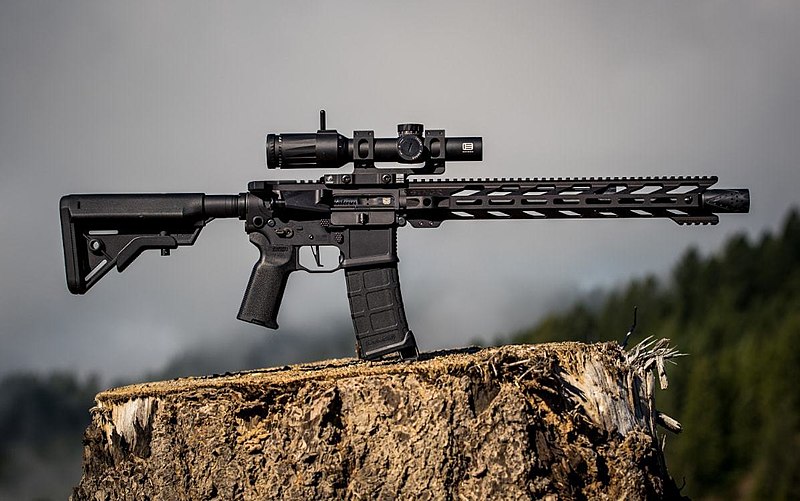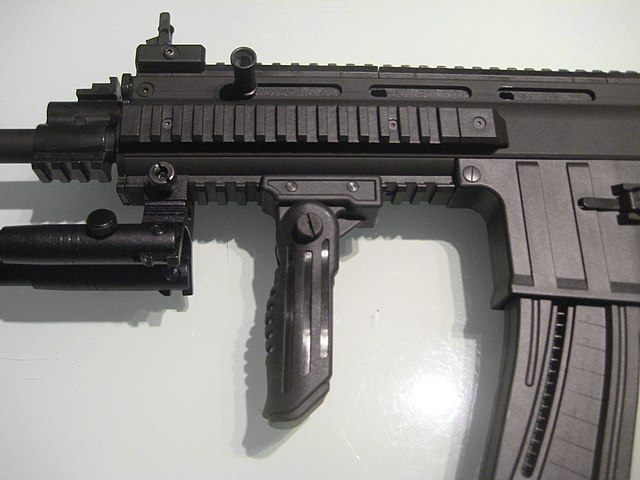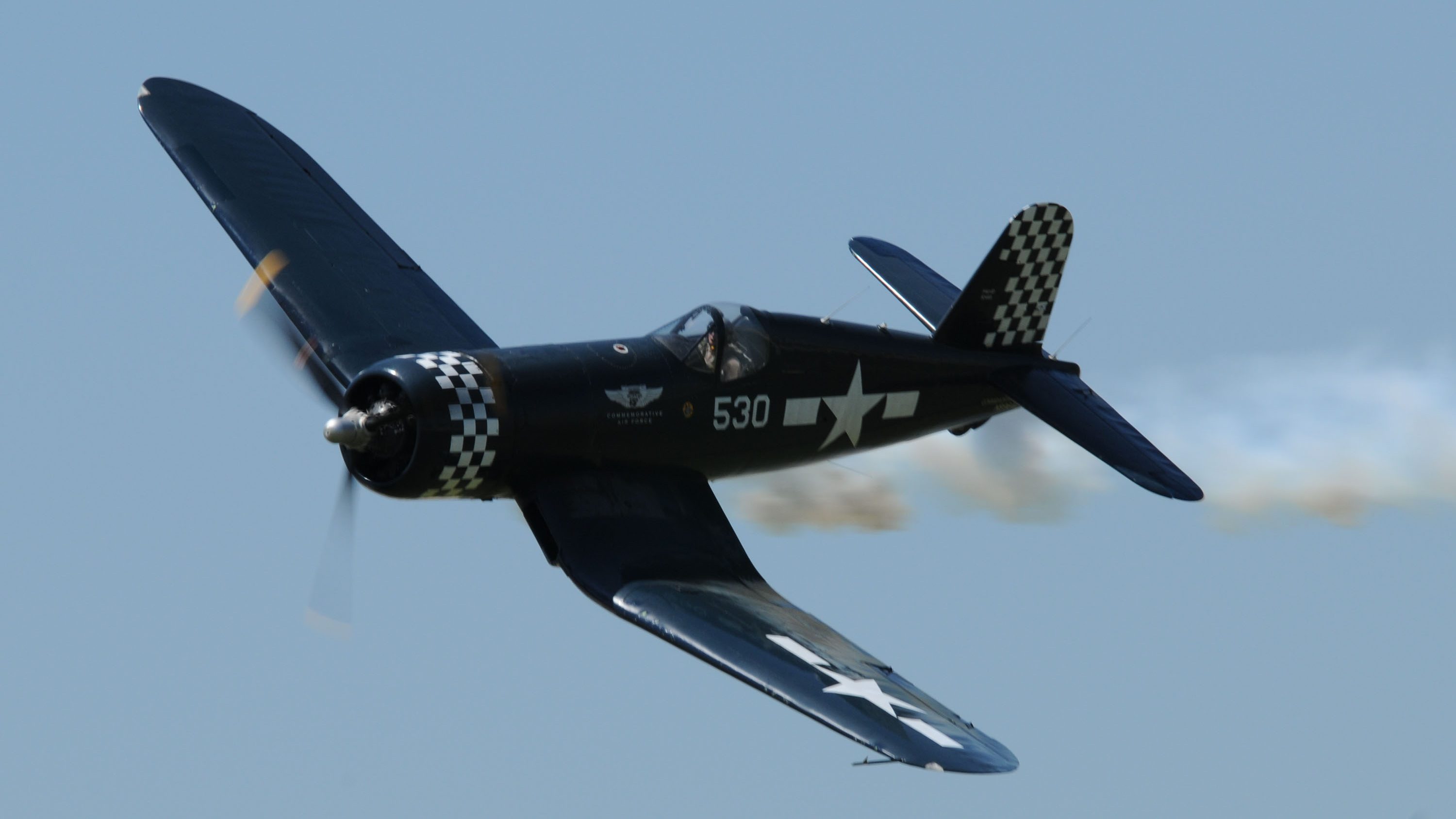
Photo courtesy of STNGR USA
In the last decade or two, we’ve seen an explosion in the number of optic mounting systems out there. For almost a century, we stuck to the battle-tested 1913 picatinny rail design. But somewhere around the turn of the millennium, that changed. We started seeing a ton of new ways to mount accessories to a rifle. One of them (and arguably one of the most successful) was the M LOK rail, a free float handguard for mounting accessories. We’ll look at what M LOK is in this post.
What is M LOK?
Think of M LOK as a picatinny rail on steroids. Like the ageless picatinny system, it’s used to attach equipment like lights and lasers to a rifle (and some guns defined as pistols for legal reasons). You’ll generally find M LOK systems on the pistol of a rifle.
Visually, M LOK looks like a simple cutaway oblong shape, with these shapes running along the entire length of a handguard. If you’re familiar with the Keymod system, M LOK looks very similar (minus the larger circular cutout on one end of the shape).
M LOK Origins
M LOK first made its appearance way back in 2007. Back then, the Army was holding trial tests for what it thought would become its “rifle of the future.” One of the entrants in the competition (which FN would later win with its SCAR) was Magpul’s “Masada” rifle. This gun would later come to be known as the ACR and distributed by Bushmaster and Remington.
One of the many standout features of the ACR was the “Magpul Original Equipment,” or “MOE” system. Essentially a small cutout in the polymer body of the gun, this slot allowed an operator to attach a variety of different attachments.
Over the next 15 years, the MOE system developed into the M LOK that we know today.
M LOK Pros and Cons
M LOK has enjoyed a huge popularity among both military and civilian users alike. There are several reasons for that.
One huge advantage that this system has over traditional 1913 picatinny rails is that they allow for much more airflow around the rifle’s barrel. This helps it dissipate heat, making it more durable for sustained fire. Since M LOK also involves removing mass from the rifle (rather than adding it like the picatinny system), it makes for a lighter firearm than a picatinny rail does.
The more common 1913 picatinny rail system for mounting accessories. Photo courtesy of Nekator.
Here’s another massive benefit of this system: it’s a truly free float handguard. In other words, no part of the handguard contacts the barrel, and it doesn’t make direct contact with the receiver. This means the M LOK system doesn’t get affected by barrel movement, rendering it immune to recoil and barrels getting hot.
One final big advantage of this system is that you can actually use it to mount lengths of picatinny rail. This, in essence, means that you can convert any 1913 rail accessories into M LOK accessories, making it one of the best systems out there.
Best Accessories for the M LOK Rail
If you’re looking to add some of the best accessories out there to your M LOK system, bear one thing in mind. They are most often utilized on a rifle’s handguard. Additionally, you don’t generally use M LOK to mount an optic. It’s possible to do it, since you can convert any M LOK section to a 1913 rail (as we mentioned earlier). But for the most part, you’re better off sticking to attachments like tactical lights, lasers, and foregrips.
Learn More About M LOK and Other Firearm Systems at SDI
Are you curious to learn more about the multitude of mounting systems on firearms today? What about turning that into a career? At SDI, we can give you the tools you need to start your career in the firearms industry. To learn more, check out the programs we offer.



